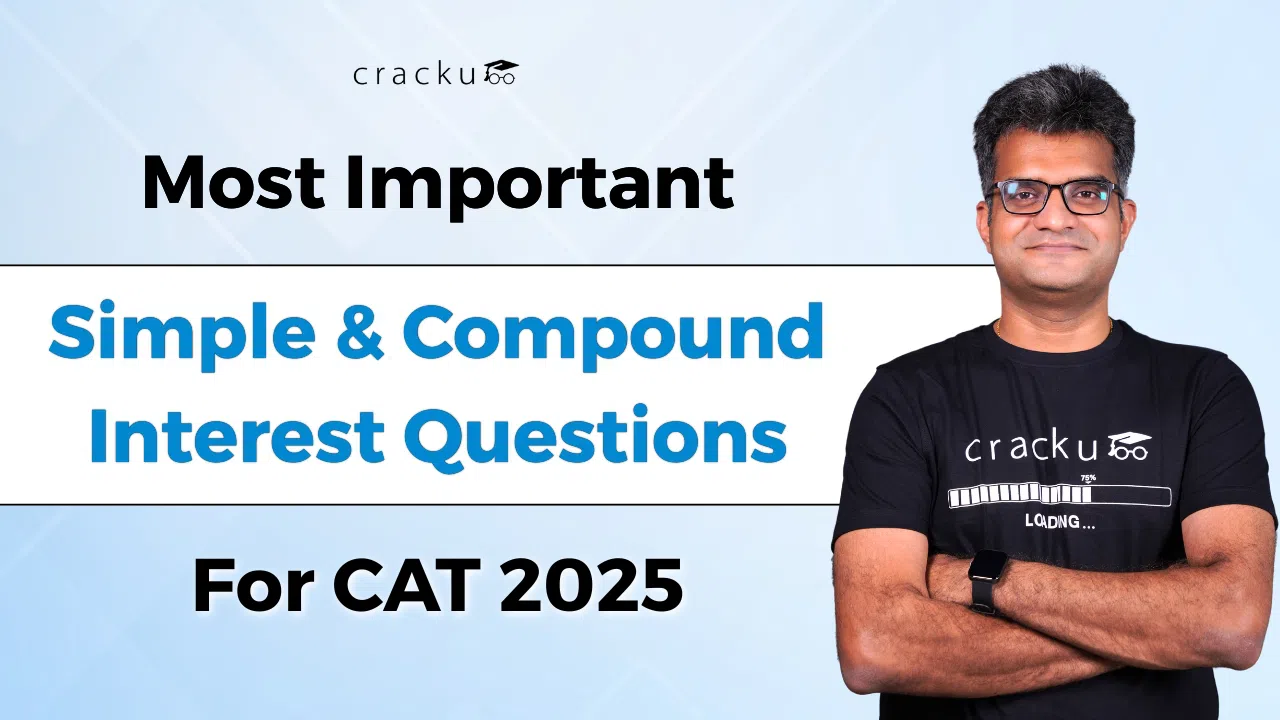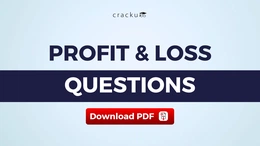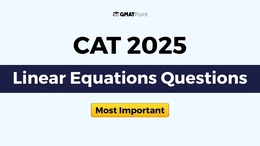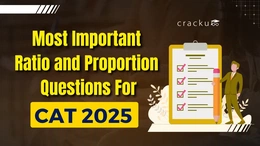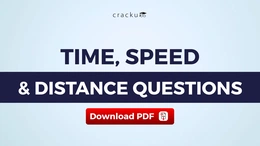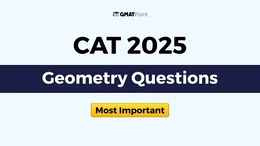CAT Simple Interest and Compound Interest Questions 2025
Simple and Compound Interest is a key topic in the Arithmetic part of the CAT Quant section. It tests your understanding of basic financial concepts and how quickly you can solve them. While the questions may look easy, they can be tricky with changing rates or compounding periods.
For CAT 2025, knowing this topic well can help you score faster and more accurately. Concepts like yearly vs half-yearly interest and comparing different returns are often tested.
In this blog, you'll find important formulas, question types, and common mistakes to avoid. We’ve also included PDFs with formulas and practice questions to help you prepare better.
Important Formulas for CAT Simple and Compound Interest Questions
To solve Simple and Compound Interest questions quickly and accurately in CAT 2025, you must be familiar with the following key formulas. These formulas form the base for almost every type of question from this topic. you can also download the complete simple and compound interest formula. PDF here.
| Concept | Formula | What It Means |
|---|---|---|
| Simple Interest (SI) | SI = (P × R × T) / 100 | Interest earned on a principal amount at a fixed rate over time |
| Amount (A) in SI | A = P + SI = P (1 + RT/100) | Total money after adding interest to the principal |
| Compound Interest (CI) – Final Amount | A = P (1 + R/100)T | Total amount after compounding annually for T years |
| Compound Interest (CI) | CI = A − P | Interest earned under compound interest |
| CI Compounded n Times a Year | A = P (1 + R/(100n))nT | Used when interest is compounded more than once a year (e.g., quarterly, monthly) |
| Effective Annual Rate (EAR) | EAR = (1 + R/(100n))n − 1 | Real annual interest rate when compounded multiple times per year |
| Shortcut CI for 2 Years | CI = P [(R² + 200R) / 100²] | Shortcut formula for CI for 2 years |
| Difference Between CI & SI (2 Years) | CI − SI = P (R² / 100²) | Directly find how much more CI gives than SI for 2 years |
| Principal (P), when SI is known | P = (SI × 100) / (R × T) | To find principal using SI, rate, and time |
| Rate (R), when SI is known | R = (SI × 100) / (P × T) | To find rate when SI, principal, and time are known |
| Time (T), when SI is known | T = (SI × 100) / (P × R) | To find time when SI, rate, and principal are given |
Also Read, CAT Formulas PDF, Download Quant Formula Sheet PDF
Common Mistakes to Avoid in CAT Simple and Compound Interest Questions
While preparing for CAT 2025, it’s important to avoid common mistakes in CAT simple and interest questions. Avoiding these mistakes will help you get better results and reduce errors in the exam.
Using the wrong formula: Always check if the question asks for Simple Interest or Compound Interest before applying the formula.
Ignoring compounding frequency: If interest is compounded half-yearly or quarterly, adjust the rate and time accordingly. Using the annual formula directly will give wrong answers.
Not converting time correctly: Time given in months or days must be converted into years before using any formula.
Rounding off too early: In Compound Interest questions, avoid rounding intermediate steps. Only round off the final answer to avoid errors.
Missing key terms in the question: Terms like “compounded annually” or “simple interest” are important. Misreading them can lead you to use the wrong method.
List of CAT Simple and Compound Interest Questions
Question 1
Anil invests Rs. 22000 for 6 years in a certain scheme with 4% interest per annum, compounded half-yearly. Sunil invests in the same scheme for 5 years, and then reinvests the entire amount received at the end of 5 years for one year at 10% simple interest. If the amounts received by both at the end of 6 years are same, then the initial investment made by Sunil, in rupees, is
correct answer:- 20808
Question 2
A person invested a certain amount of money at 10% annual interest, compounded half-yearly. After one and a half years, the interest and principal together became Rs.18522. The amount, in rupees, that the person had invested is
correct answer:- 16000
Question 3
Anil invests Rs 22000 for 6 years in a scheme with 4% interest per annum, compounded half-yearly. Separately, Sunil invests a certain amount in the same scheme for 5 years, and then reinvests the entire amount he receives at the end of 5 years, for one year at 10% simple interest. If the amounts received by both at the end of 6 years are equal, then the initial investment, in rupees, made by Sunil is
correct answer:- 4
Question 4
Nitu has an initial capital of ₹20,000. Out of this, she invests ₹8,000 at 5.5% in bank A, ₹5,000 at 5.6% in bank B and the remaining amount at x% in bank C, each rate being simple interest per annum. Her combined annual interest income from these investments is equal to 5% of the initial capital. If she had invested her entire initial capital in bank C alone, then her annual interest income, in rupees, would have been
correct answer:- 2
Question 5
An amount of Rs 10000 is deposited in bank A for a certain number of years at a simple interest of 5% per annum. On maturity, the total amount received is deposited in bank B for another 5 years at a simple interest of 6% per annum. If the interests received from bank A and bank B are in the ratio 10 : 13, then the investment period, in years, in bank A is
correct answer:- 4
Question 6
Anil borrows Rs 2 lakhs at an interest rate of 8% per annum, compounded half-yearly. He repays Rs 10320 at the end of the first year and closes the loan by paying the outstanding amount at the end of the third year. Then, the total interest, in rupees, paid over the three years is nearest to
correct answer:- 2
